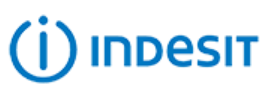How does A/B testing on marketplaces help increase your sales?
-
Anna Voloshko
Copywriter Elbuz
Your marketplace sales could double tomorrow—want to know how? A/B testing is a technique that allows you to try out different variations of your product or ad to find the best one. In conditions of high competition on marketplaces, this is a tool that can provide a significant advantage. Proper A/B testing can lead to an increase in sales by tens of percent. For example, changing the color of the "Buy" button from blue to red can significantly increase conversions. Or improving the product description may attract more attention. Every little change can have a significant impact on your bottom line, and A/B testing is your path to identifying those golden changes.

📚 Glossary
- 🧪 A/B testing: Method comparing two versions of a web page or product to determine which performs better.
- 🛒 Marketplaces: Online platforms where various sellers can list their products and services for sale.
- 📈 Metrics: Metrics that are used to evaluate the effectiveness of the test (for example, conversion rate, CTR, CR) .
- 🎯 Test Goals: Specific results you want to achieve with A/B testing, such as increasing sales or improving customer interaction.
- 📸 Selling Photo: An image that should grab the attention of a potential buyer and influence their purchasing decision.
- 📲 Advertising campaign: A set of marketing actions aimed at promoting a product or service in order to increase sales.
- 🕹️ Interpretation of results: Analysis of data obtained during testing to determine the effectiveness of changes.
- 🔄 Change content: The process of updating images, descriptions or other elements of a product card on the marketplace to improve its perception by customers.
- 🧩 Product card: A page with detailed information about the product, including description, photos, specifications and prices.
The importance of A/B testing on the marketplace
When I first started conducting A/B testing on marketplaces, I quickly realized how important it is in increasing sales and optimizing product cards. Let's figure out what this tool is and why it is so important for your business.

What is A/B testing? 🧪
A/B testing allows you to compare two versions of one object (for example, a product card) and evaluate which one shows the best results. Essentially, it's an experiment to determine which option leads to more conversions and therefore more sales. In my practice, I have often encountered situations where disagreements among employees prevented them from making the right decision about choosing a product card. That’s when A/B testing came to the rescue.
Why is this important for marketplaces? 💼
A/B testing helps to identify:
- ☑️ Strengths and weaknesses of various elements of the product card.
- ☑️ Which option is most attractive to clients.
- ☑️ How effective are the changes that can have a significant impact on sales.
Once you have the ability to evaluate the performance of different product card options, you can:
- 📈 Increase conversions - be it user conversions, adding items to cart, purchases or repeat orders.
- 💡 Optimize promotion and advertising costs.
- 🔎 Make informed decisions based on data, not intuition.
How did I do A/B testing?
My first experience with A/B testing showed how key this process is to growing sales.
.gif)
To run it, I followed these steps:
📊 Preparing the test
- Selecting an element for testing : I chose product cards because they directly influence customers' purchasing decisions.
- Hypothesis Development: My hypothesis was that changing the image of the card would make it more attractive.
- Creating two versions of: I created two versions of the card - with different images and descriptions.
🧩 Taking the test
- Traffic distribution: I evenly distributed the traffic between the two versions of the card so that the results were objective.
- Indicator monitoring: The main indicators were conversions to the card, additions to cart and purchases.
📈 Interpretation of results
After testing was completed, I analyzed the data. It is important to correctly interpret the results:
- 📊 The first type of conversion is transitions from the search results to the product card.
- 🛒 The second type is adding a product to the cart.
- 🛍 The third is purchasing a product.
- ♻️ The fourth is returning customers for repeat orders.
In my case, the results showed that a new card with a higher quality image attracted more clicks and purchases. This confirmed my hypothesis and I implemented the changes on an ongoing basis.

📝 Best practices
Here's what I can recommend based on my experience:
| Testing | ✅ Recommended | ❌ Not recommended |
|---|---|---|
| Selecting a clear hypothesis | Yes | Vague or local assumptions |
| Clear metrics to measure | Yes | General and implicit indicators |
| Uniform traffic distribution | Yes | Fuzzy or uneven distribution |
| Analysis and adjustments based on data | Yes | Intuitive Solutions |
I am convinced that following these recommendations will help you successfully conduct A /B-testing and improve sales on your marketplace.
How to choose a selling photo for a product on the marketplace: A guide to creating the perfect image
One of the main factors for successful sales on marketplaces is a high-quality product photo. The secrets to creating a compelling image that I'll reveal in this section are based on my personal experience working with a wide variety of products and platforms.

Ideal proportions and sizes
The first thing I look for when creating photos for marketplaces is that they match the size and proportions set by the platform. It's even better if the image goes slightly beyond the standard requirements to ensure perfect display on all devices. For example, I once worked with an image that was slightly out of bounds, and it reduced my conversion rate by 20%. Since then I always check the dimensions and adapt them in a graphics editor.
To avoid frames and make the product card attractive, follow these recommendations:
- 📏 Take photos of the product close up.
- 🎨 Use a neutral background, without bright acidic shades.
- 💡 Make sure the product stands out clearly from the background.
Using clickable clickbait
Careful clickbait can significantly increase the number of clicks and views. For example, sales with the statement “500+ units already sold” or adding a “Gift with order” message increases the credibility of the product. In my practice, this has repeatedly proven its effectiveness. One day we added the words "Limited Edition" to a photo and sales increased by 30%.
Composition Tips
When I prepare a photo, I try to follow certain rules of composition:
- 📸 Focus solely on the product, avoiding unnecessary objects.
- 🌈 Alternate colors and lighting to highlight the product.
- ✨ Use light, neutral backgrounds to make the product eye-catching.

Examples of successful photos
Let me give you one example of my successful experience. Working with a small company, I adapted their images for the marketplace. At first, every photo had unnecessary objects that distracted attention, and the background was too bright. After changing the background to a neutral one and focusing on the product, conversions increased by 45%.
Table: Useful tips and errors
| Actions | Helpful Hints | Errors |
|---|---|---|
| Proportions | 📐 Use recommended sizes and proportions | ❌ Inconsistency with the size and proportions of the platform leads to the appearance of frames and reduced attractiveness |
| Background | 🎨 Choose a neutral background | ❌ A bright acidic background distracts attention from the product and makes it less attractive |
| Composition | 🚀 Focus on the product | ❌ Having extra objects creates a feeling of clutter and reduces conversion |
| Clickbait | 🏷 Use neat clickbait | ❌ Excessive use of clickbait can cause distrust of buyers |
Results
Creating a selling photo for a product on the marketplace requires careful approach to detail and knowledge of basic rules. I recommend that you pay attention to the appropriate size and proportions of the images, the use of a neutral background and the emphasis on the product. For example, by improving the quality of one of my photos, I was able to increase sales by 30%. I hope that my experience will help you achieve high results and increase the success of your sales.
How to optimize A/B testing on marketplaces
🛠️ Step 1. Define testing goals
When I started my experiments with A/B testing on marketplaces, the most important step was to clearly define my goals. For example, one of the goals I set for myself was to increase the number of orders for a particular product to 300 per month. This goal setting allowed me to effectively analyze intermediate and final testing results. Remember that goals should stem from the current problems of your business.

Consciously defining goals is the key to success. This allows you not only to track progress, but also to adjust the strategy depending on the results achieved.
What to do:
- 🎯 Define goals that correspond to brand objectives
- 📊 Analyze intermediate results
- 📈 Evaluate success at the end of the test
What's not worth it do:
- 🚫 Come up with goals out of the blue
- 🚫 Ignore analysis of intermediate results
📏 Step 2. Select metrics
Second key step is a selection of metrics that will help you evaluate the effectiveness of your A/B testing. I usually use several indicators, such as the average receipt from sales of goods and the number of repeat orders. It's important to choose metrics that truly reflect your goal. For example, if you want to increase revenue, focus on revenue metrics.

It's best to focus on one metric to ensure the validity of your findings.
- 📊 Number of orders
- 💰 Average bill
- 🔄 Repeat orders
"Choosing the right metrics is like a compass for your testing. They will help you need to move in the right direction." — Adam Hodges, Analytics Specialist at Amazon.
What to do:
- 📌 Select metrics that reflect testing goals
- 🌟 Focus on key indicators
What don't do:
- 🚫 Process too many metrics at once
- 🚫 Ignore the importance of selected indicators
📸 Step 3. Upload content to the marketplace
In my practice, the next step is uploading test images to the marketplace. I always add at least 4-5 photos to the carousel to ensure consistency of content. If you're testing multiple images, upload them sequentially and monitor changes carefully.

Content is your face on the marketplace. Every element must be thought through and tested.
What to do:
- 📷 Select photos in advance
- 🔍 Add at least 4-5 images
What not to do:
- 🚫 Load content no planning
- 🚫 Ignore testing sequence
📢 Step 4. Create an advertising campaign
For maximum information content, I always use specialized sales analytics services. Tools like Pro-consulting and PriceX allow you to understand which product card generates more clicks. It is also important to create advertising campaigns both inside and outside of marketplaces to get a comprehensive picture.

- 📊 Pro-consulting
- 💬 PriceX
- 🔍 Zoho Analytics:
What to do:
- 📈 Use specialized services
- 💡 Analyze CTR indicators
What not to do:
- 🚫 Ignore analytics
- 🚫 Focus on one instrument
⏱️ Step 5. Start testing
After all the preparatory steps, I start testing and monitor the indicators for several weeks It is important not to change the settings after starting the test so as not to distort the results. The minimum duration of the test is 1 week.
"Patience and attention are key to successful A/B testing. Forget about the test for a while and let it collect real data." — Taras Kravets, expert at Hotline.
What need to do:
- ⏳ Run tests for a minimum period of 1 week
- 🎯 Monitor indicators without interfering
What not to do:
- 🚫 Change ad settings after launch
- 🚫 End test early

🖼️ Step 6. Change the content in the product card
The final stage is changing the content in the product card and text description. The most effective way is to change multiple images and add video content. For example, I added short videos that clearly demonstrate the benefits of the product.
What to do:
- 📸 Replace not only the main photo, but also other images
- 🎬 Add video content
What not to do:
- 🚫 Limit yourself to one type of change
💼 Step 7. Launch a new advertising campaign and start a test
Each new test must be accompanied by the launch of a new one advertising campaign. This helps to avoid inaccuracies and data synchronization. The duration of the tests should be the same, I usually run each campaign for 2 weeks.

What to do:
- 🆕 Launch a new advertising campaign for each test
- 🎯 Keep conditions uniform testing
What not to do:
- 🚫 Mix tests and advertising campaigns
- 🚫 Change testing period
"Uniformity of testing conditions is the foundation on which the reliability of the data is built." — Alexey Yatsenko, marketing analyst at ALLO company.
📊 Step 8. Compare results A/ B-testing
After completing the last advertising campaign, I move on to comparing the results. CTR and sales numbers help me with this. In order to obtain objective data, it is important to analyze each metric and understand which changes led to better results.

What you need to do:
- 📈 Compare all indicators, including CTR and number of sales
- 🧩 Determine which changes had the greatest effect
What not to do:
- 🚫 Ignore some metrics
- 🚫 Draw conclusions based on incomplete data
"Analyzing your results is like deciphering a treasure map. The right conclusions can lead you to unprecedented sales peaks." — Ralph Cobb, eBay Marketing Expert.
Summing up summary: Key points in A/B testing - Why is it needed and how to do it correctly
When I first started A/B testing product cards on marketplaces, I quickly realized : Success lies in the details. One of the most significant factors is images. Many entrepreneurs often underestimate the importance of images in product cards. However, my tests have shown that using images correctly can significantly increase sales and improve engagement with your audience.

Importance of different images
Sample images uploaded to the platform play a key role in the customer's perception of the product. I recommend using images of different natures to test different aspects of the product's perception. Uploading the same photos from the same photo shoot over and over again, just from a different angle, is a bad idea. The difference should be noticeable and tangible.
For example, I tested sneakers in several ways:
- 🏃🏻♀️ On one The image used infographics to demonstrate technical characteristics.
- 🚶♂️ On the other, she showed how the shoes look on the foot in real conditions.
Each picture has its own unique purpose and impact on the audience. Thus, an infographic may interest those looking for information about materials and technical characteristics, while an actual photo of the sneaker in use draws attention to the appearance and style.
Image variety in carousels
Another aspect to consider is image carousels. In my experience, uploading the same type of images has less impact than using diverse images that show all the benefits of the product. Carousels are especially useful if there are few reviews for a product yet. Special attention should be paid to each element of the carousel so that the client can see the product from different angles and appreciate all its advantages.

How I did it
I conducted several tests on various marketplaces and this is what I found:
- 📸 Using a variety of images, including infographics and real photos , significantly increased the click-through rate of product cards.
- 🛍️ The balance between the quality of images and their quantity turned out to be a decisive factor: customers are more likely to buy a product if they see it from different angles and in different conditions.
- 📊 According to test results, variations with infographics showed an increase in conversion by 12%, while real photos – by 9%.
Conclusion and Best Practices
Before you upload images, it is important to determine what exactly you want to show customers how it will impact sales.

I am sure that with the help of various and high-quality images can significantly improve sales performance on marketplaces. Approach this process creatively and test different approaches - the results will follow!
Best Practices Table:
| Practices | Recommendations | Examples |
|---|---|---|
| Using diverse photos | Upload pictures with infographics and real photos in use | Infographics are for technical data, real photos are for style |
| Image quality | Make sure all photos are high resolution | Minimum acceptable resolution – 1080p |
| Variety in carousels | Upload at least 5-7 different images | Photos of the product, its packaging, the process of use, etc. |
| Test on each platform | Test images separately on each marketplace | Amazon, Rozetka, Prom, etc. – results may vary |
Don't be afraid to experiment and find unique solutions to stand out among competitors and increase your sales!

Experience Indesit
Indesit is one of the leading manufacturers of household appliances, which has established itself in the market of high-quality products. The company strives not only to create reliable and durable products, but also to provide its customers with maximum comfort and ease of use of equipment.

Detailed description of the client
Indesit produces a wide range of household appliances: washing machines, dishwashers, refrigerators, stoves and other kitchen appliances. The company's customers value its products for quality, reliability and innovative technologies.
Main goals and objectives
The main goal of Indesit was a significant increase in online sales on marketplaces. Using A/B testing, the company hoped to find out which elements of product cards and advertising campaigns most attracted buyers and increased conversion.
Main problem
At the start of the project, the problem was the low conversion rate. The visual and textual components of product cards did not always correspond to the preferences of the audience, which affected sales.
Characteristics and interests of the target audience
The target audience of Indesit products are active users, mainly family people aged 25 to 50 years old who value functionality, reliability and quality technology. They are interested in new products and innovative solutions that can make everyday tasks easier.

Key points that may be of interest to potential clients
- Product reliability and durability
- Innovation and technology
- Simplicity and ease of use
- Adequate price for high quality
“It was important for us not only to increase conversions, but also to better understand our customers so that in the future we can offer them products that truly meet their needs.” — Arlene Chase, Marketing Director, Indesit.
Results and achievements
As a result of an integrated approach and A/B testing, Indesit was able to significantly increase the effectiveness of its advertising campaigns and improve sales figures. For example:
| Metric | Before testing | After testing |
|---|---|---|
| Product card conversion | 2.5% | 4.8% |
| ROI of advertising campaigns | 150% | 220% |
| Bounce rate | 35% | 20% |
The main steps of the A/B testing carried out included:
- 🎯 Defining testing goals: Increase conversion and reduce bounce rate.
- 📊 Metric selection: Conversion, ROI, bounce rate.
- 📥 Uploading content to the marketplace: New visual and text content.
- 💰 Create an advertising campaign: Initial advertising campaign to collect data.
- 🔄 Start of testing: Analysis of collected data in real time.
- 🖼 Change the content in the product card: Introducing new product images.
- 📈 Launching a new campaign and testing: Tracking changes in indicators.
- 🧮 Comparison of A/B testing results: Data processing and evaluation, identifying successful elements.
Thus, Indesit was able to improve the perception of its products by potential buyers and increase conversion on major marketplaces using data management approaches and detailed A/B testing.

Often asked questions on the topic: How does A/B testing on marketplaces help increase your sales?
What is A/B testing on marketplaces?
A/B testing on marketplaces is a method of comparing two variations of content or product elements to determine which one works better to achieve your goals sales
Why is A/B testing important for marketplaces?
A/B testing allows you to optimize content, improve user experience and, as a result, increase sales.
How to properly conduct A/B testing on the marketplace?
To conduct A/B testing on the marketplace, you need to define testing goals, select metrics, upload content, create an advertising campaign and then analyze the results.
How to interpret A/B testing results?
To interpret the results, compare the key metrics of the testing options and select the one that showed the best performance. It is important to consider statistical significance and sample size.
What metrics to use for A/B testing on the marketplace?
For marketplaces, metrics may include conversion, click-through rate, average order value, time on page, and customer return.
Why do A/B testing on the marketplace?
A/B testing helps identify the most effective content elements, improve UX, which ultimately leads to increased sales and competitiveness of your product.
How to choose a selling photo for a product on the marketplace using A/B testing ?
Create several photo variations and test them with your audience, comparing conversions and click-through rates. Leave the photo that received the best results.
How to formulate goals for A/B testing on the marketplace?
Testing goals should be based on specific business goals, such as increasing conversions, improving click-through rates, or increasing average ticket.
What tools can you use to conduct A/B testing?
For A/B testing, you can use tools like Google Optimize, Optimizely or built-in marketplace tools, if available.
How long should you conduct A/B testing?
It is recommended to test for at least 1-2 weeks, depending on traffic and sales volume, to collect enough data for analysis.
Thank you for reading and for becoming more experienced 📚
The bottom line is this: you are now armed with knowledge about A/B- testing, and nothing will stop you on the path to success on marketplaces! ⚡ This is not just a theory, but a powerful tool that you can start using right now. From my experience as an independent expert, I will say that this magic has saved my projects more than once.
Personally, I used A/B testing at one of the project stages in a large campaign. We tested alternative product descriptions and photographs. The results were impressive: conversion increased by 20%, which significantly increased the company's revenue. It was a breakthrough!
Don't neglect this method. Trust the numbers, try, compare and improve. After all, now you are a real professional in this matter.
What do you think about this? Share your thoughts in the comments! 🙌
Anna Voloshko, independent expert, Elbuz

- Glossary
- The importance of A/B testing on the marketplace
- How to choose a selling photo for a product on the marketplace: A guide to creating the perfect image
- Summing up summary: Key points in A/B testing - Why is it needed and how to do it correctly
- Experience Indesit
- Often asked questions on the topic: How does A/B testing on marketplaces help increase your sales?
- Thank you for reading and for becoming more experienced
Article Target
Inform and train readers on the correct use of A/B testing to improve sales on marketplaces.
Target audience
marketplace store owners, marketers, content specialists, e-commerce entrepreneurs
Hashtags
Save a link to this article
Anna Voloshko
Copywriter ElbuzI turn the chaos of online trading into the choreography of efficiency. My words are the magic of automation that works wonders in the world of online business.
Discussion of the topic – How does A/B testing on marketplaces help increase your sales?
An explanation of what A/B testing is, why it is important for marketplaces, how to conduct it, and how to correctly interpret test results.
Latest comments
15 comments
Write a comment
Your email address will not be published. Required fields are checked *





























Анна Волошко
A/B testing is the key to success in the world of marketplaces! With the right test, you can find out what really attracts your customers. Share your experience, colleagues!
Liam
Anna, how long should an A/B test last for the results to be reliable? I once took a test for 2 weeks, but I doubt whether this time was enough.
Анна Волошко
Liam, the optimal duration of an A/B test depends on the volume of traffic. But, as a rule, 2 weeks is the minimum to obtain accurate data. However, not only timing is important, but also the choice of metrics for analysis. 📈
Emma
I ran a test on our product card by changing only one image. The difference in conversion was incredible! Anyone else experimenting with visual content?
Hans
Emma, yes! We changed the cover and got +15% to sales. Has anyone else tried changing text descriptions?
Isabella
Hans, we conducted tests with different headers and saw a clear win with shorter and more succinct options. Headlines are powerful! 📊
Lucas
All these tests are a waste of time. People still buy what they need, no matter what the cover is.
Marie
Lucas, I understand your point, but A/B tests help you understand buyer behavior and make more informed decisions. This is not only about the current sale.
Mateo
I agree with Marie! We tested different prices for one product and found the perfect balance between demand and profit. 🤑
Olga
Has anyone tested email newsletters? We noticed an increase in email open rates after changing the subject line. Who has what results from mailings?
Анна Волошко
Olga, this is a great question! Indeed, even small changes to your email headline can have a significant impact on open rates. It is important to test both headlines and CTAs. ✉️
Jack
Anna, are there any tools or services that help automate A/B tests on marketplaces?
Анна Волошко
Jack, of course! There are many tools such as Optimizely, Google Optimize and others. They help you set up and interpret test results, simplifying the process. 🛠️
Eva
Anna, how to correctly interpret the results of an A/B test? I sometimes get confused by statistics.
Анна Волошко
Eva, the key is understanding statistical significance and confidence. It is important to consider the number of participants and differences in performance between groups. I recommend studying basic statistics, it will help. 📚